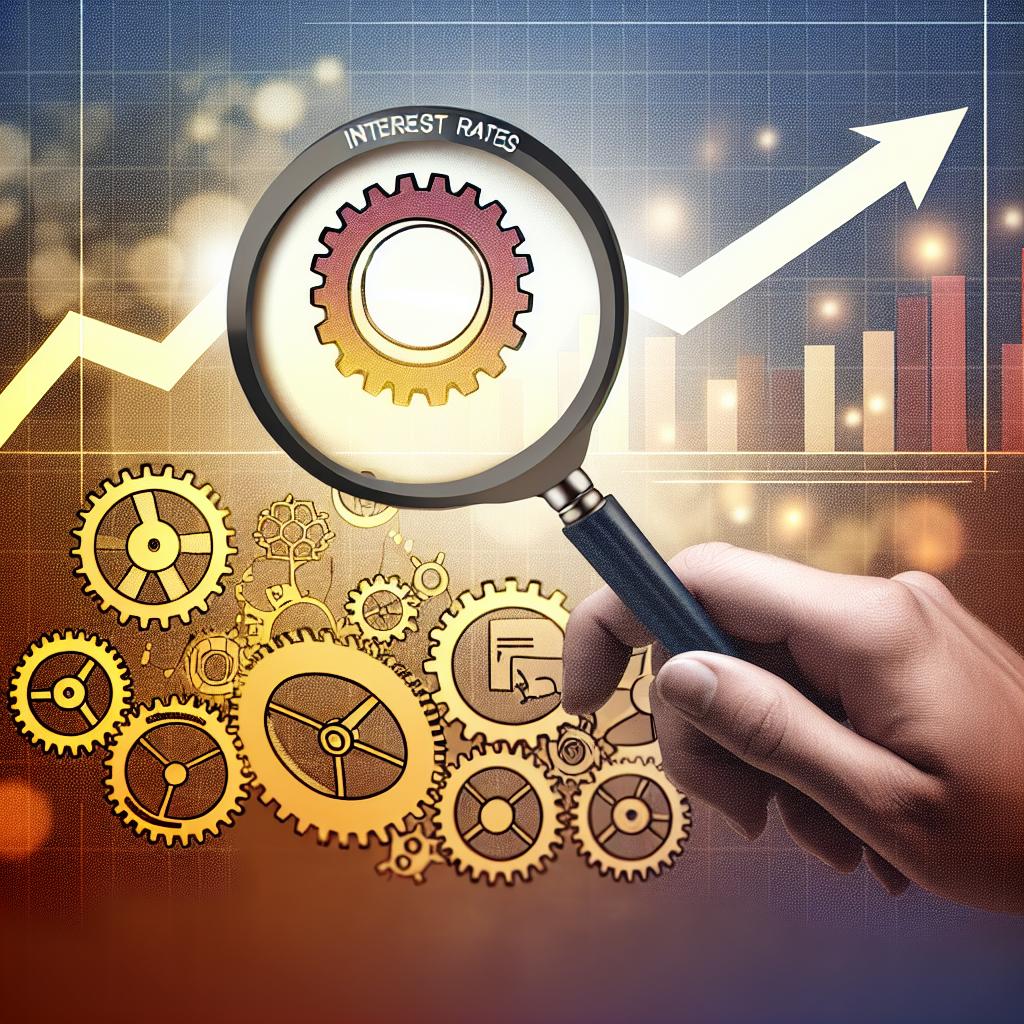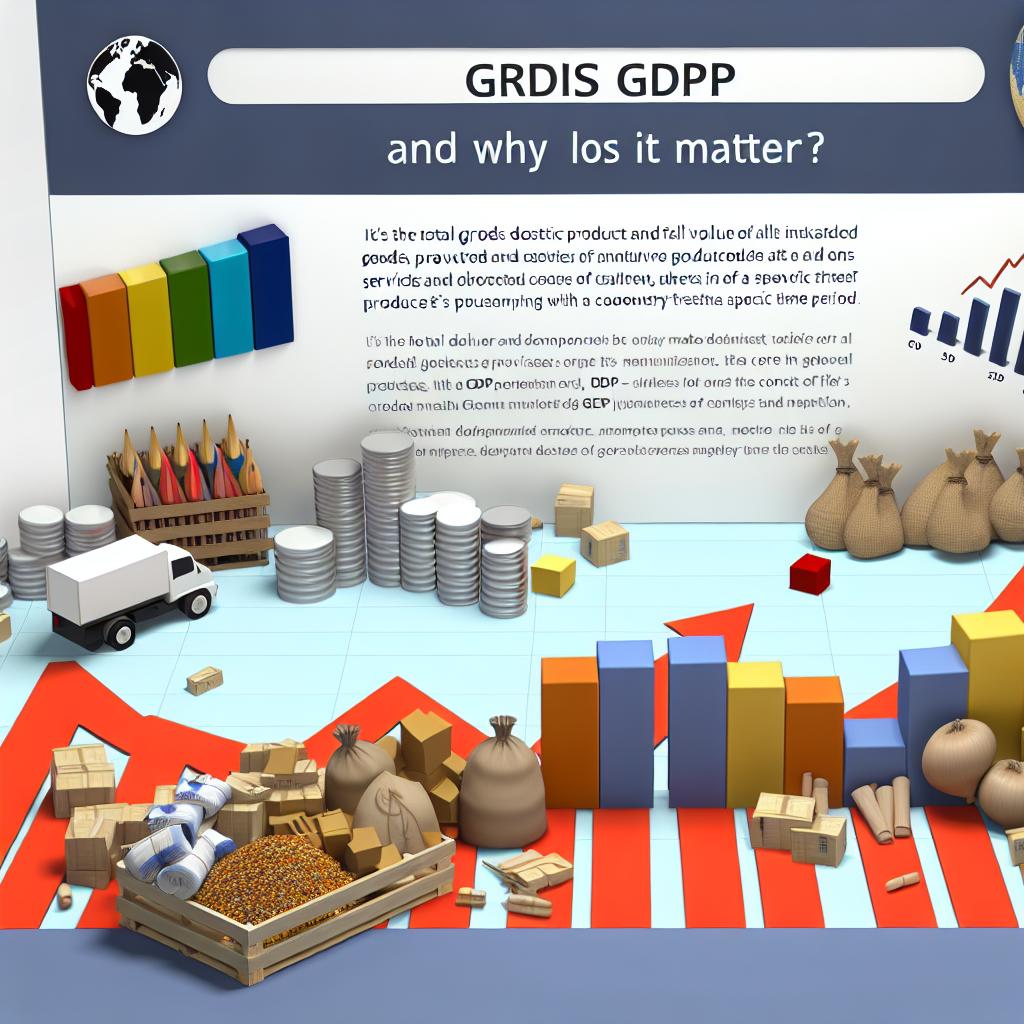Archives: The Role of Interest Rates in Economic Growth

Understanding Interest Rates
Interest rates are a foundational component in the framework of modern economies, representing the cost of borrowing money, typically as an annual percentage of the loan amount. Central banks such as the Federal Reserve in the United States or the European Central Bank in the Eurozone set these rates as part of a broader monetary policy strategy. By influencing borrowing costs, interest rates significantly impact consumer spending, business investment, and overall economic growth.
Monetary Policy and Economic Growth
Central banks employ interest rates as a lever to either stimulate or restrain economic activity. When central banks lower interest rates, their objective is to reduce borrowing costs, thereby encouraging businesses to invest in new ventures and consumers to spend more freely. This strategy can energize economic activities, often leading to enhanced growth rates. Conversely, by raising interest rates, central banks intend to make borrowing more expensive, which can dampen investment and spending activities, ultimately aiding in the control of inflation.
The Mechanisms of Interest Rates
Interest rates function as a double-edged sword within an economy. On one side, low rates decrease the cost of borrowing, enticing businesses and consumers to spend. The availability of cheaper loans can lead businesses to invest in new technologies, expand operations, and hire additional staff. For consumers, lower rates translate to savings on mortgages or car loans, which can free up capital for other expenditures, thus invigorating the economic cycle.
On the other side, persistently low interest rates may not always yield positive outcomes. Prolonged periods of low borrowing costs can lead to excessive risk-taking, as businesses and individuals may accumulate substantial debt, leveraging their positions unduly. This scenario not only reduces savings rates but also sets the stage for asset bubbles, where the prices of real estate or stocks rise unsustainably due to increased borrowing and speculative investment.
Effects of High Interest Rates
Higher interest rates serve as a means to restrain economic activity, chiefly by escalating the cost of borrowing. When loans become expensive, businesses might scale back on new projects, and consumers might reconsider major purchases, thus tempering economic growth. Although this approach can stabilize prices by curbing inflationary pressures, it may also stifle economic progression. For individuals and entities already facing existing debt obligations, higher interest rates amplify financial burdens, leading to potential financial difficulties.
Balancing Interest Rates
The challenge for central banks lies in the equilibrium of interest rates to ensure a stable and conducive economic environment. Policymakers continuously analyze a range of economic indicators, including inflation rates, employment figures, and GDP growth trends, to discern the most suitable interest rate levels. An optimal balance aims to sustain low inflation levels while promoting robust and sustainable economic growth.
Monetary Policy Implementation
Monetary policy, encompassing interest rate adjustments, is a critical mechanism through which central banks influence economic conditions. Policy decisions on rate adjustments are typically made during central bank meetings, where economic trends and forecasts are scrutinized. The decisions, communicated through official announcements, inform market participants and the public about the future direction of borrowing costs, impacting financial markets and economic expectations.
Interplay Between Interest Rates and Economic Indicators
Interest rates are closely intertwined with a variety of economic indicators. Inflation is particularly sensitive to interest rate changes. Low rates can encourage spending and investment, resulting in increased demand for goods and services, which may drive up prices. Conversely, high rates can suppress demand, thereby reducing inflationary tendencies. Employment levels are similarly affected, with low rates fostering job creation through enhanced business activities, while high rates might lead to workforce contractions as companies curb expansion plans.
GDP growth is another critical factor influenced by interest rate policies. High economic growth rates typically correlate with low interest rates that foster investment and consumption. However, should growth become too rapid and ignite inflationary concerns, central banks might increase rates to moderate expansion.
Conclusion
In summary, interest rates hold a powerful sway over economic growth dynamics. Serving as a strategic tool for central banks, they manage the speed of economic activities, inflation control, and behavioral influences on consumers and businesses. Consequently, a thorough understanding of interest rates and their implications is essential for businesses, consumers, and policymakers. This understanding enables informed decision-making and strategic financial planning. Those interested in a deeper exploration of monetary policy’s ramifications may consult resources from the Federal Reserve or the European Central Bank.
Archives: Understanding Inflation and How It Affects the Economy

Understanding Inflation
Inflation is a term frequently encountered in economic discussions and is a key concept that reflects the rate at which the general level of prices for goods and services rises. This process, in turn, erodes purchasing power, which determines how much a unit of currency can buy in terms of goods and services. In essence, inflation represents an ongoing trend where prices increase over a specific period. A steady and mild inflation rate is typically viewed positively, indicating a growing economy. However, when inflation spirals beyond control, it can pose significant challenges and result in detrimental economic effects.
What Causes Inflation?
Understanding the causes of inflation is crucial for comprehending its broader economic implications. Inflation can be triggered by several factors, often interrelated. A primary cause of inflation is the increase in the money supply that surpasses the pace of economic growth. This imbalance can occur through different mechanisms which are essential to understanding inflation dynamics:
Demand-Pull Inflation: Characterized by an upsurge in demand for goods and services that exceeds their supply, this form of inflation results in price increases. Demand-pull inflation is commonly observed in robust economic phases when consumers, buoyed by higher income levels, tend to spend more, thereby escalating demand. The resulting demand surpasses the available supply, leading firms to raise prices, thus contributing to inflation.
Cost-Push Inflation: This type of inflation arises from increases in the cost of production inputs, such as wages, energy, and raw materials. When production becomes more expensive, businesses often pass on these additional costs to consumers in the guise of higher prices. For instance, an increase in oil prices can lead to higher transportation costs and, consequently, increased prices for goods that rely on transportation along the supply chain.
Built-In Inflation: Often referred to as wage-price inflation, built-in inflation occurs when employees demand higher wages in anticipation of rising living costs. Businesses, in turn, respond by increasing the prices of goods and services to cover the higher wage expenses. This scenario can create an inflationary spiral, as rising wages prompt higher prices, leading to further wage demands and so on.
Measuring Inflation
Economists employ several indices to gauge inflation, with the two most common being the Consumer Price Index (CPI) and the Producer Price Index (PPI). These measures provide insights into the inflationary trends within an economy, thereby assisting policymakers and analysts in their assessment of economic conditions.
- The Consumer Price Index (CPI) is a critical indicator that measures the average change over time in the prices paid by urban consumers for a market basket comprising consumer goods and services. The CPI is widely used to assess the cost of living adjustments and as an indicator of consumer price inflation.
- The Producer Price Index (PPI), however, focuses on the changes over time in the selling prices received by domestic producers for their output. By examining prices at the wholesale level, the PPI provides a broader picture of inflationary pressures within the production pipeline before they reach consumers.
The Impact of Inflation on the Economy
While moderate inflation signals a healthy, functioning economy, excessive inflation presents significant economic challenges. The effects of inflation permeate various aspects of economic life and can affect different stakeholders in distinct ways.
Decreased Purchasing Power: As inflation drives up prices, the purchasing power of money declines. This effect means that consumers can purchase fewer goods and services with a given amount of money. A decline in purchasing power can constrain consumer spending, as household budgets need to stretch further to cover rising costs.
Interest Rates: To manage high inflation, central banks, such as the Federal Reserve in the United States, may increase interest rates. Raising interest rates can temper inflation by cooling consumer demand and curtailing borrowing. However, higher interest rates also make loans more expensive for both consumers and businesses, which can slow economic activity and investment.
Uncertainty: Elevated inflation levels can introduce uncertainty into the economy, making it challenging for businesses to plan long-term strategies due to erratic cost and pricing environments. This uncertainty can discourage investments, as companies may hesitate to commit to capital expenditures amid fluctuating input prices.
Managing Inflation
Governments and central banks undertake various strategies to keep inflation within manageable limits. These strategies serve to recalibrate economic conditions and ensure sustainable economic growth without the adverse effects of unchecked inflation. Key methods include:
– **Adjusting Interest Rates:** Central banks wield interest rates as a primary tool to modulate inflation. Lowering interest rates can incentivize borrowing and investment, fostering economic growth, while raising interest rates can temper overheating economies to mitigate inflationary pressures.
– **Altering Reserve Requirements:** By modifying reserve requirements for commercial banks, central banks can influence the amount of money banks can lend. Lowering reserve requirements can increase money availability in the market, stimulating spending, whereas raising them can restrict excessive money flow, containing inflation.
– **Engaging in Open Market Operations:** Central banks exert control over the money supply by buying or selling government securities in open markets. Buying securities injects money into the economy, whereas selling securities withdraws money, helping to regulate the overall supply of money.
For those seeking to deepen their understanding of inflation management and economics, numerous resources from financial institutions and economic think tanks are accessible online.
Inflation remains a vital economic indicator that influences personal finance decisions, business strategy, and monetary policy formulation. By understanding its underlying causes and effects, individuals and organizations can make more informed decisions. For more comprehensive exploration, reliable economic resources such as the International Monetary Fund or the Federal Reserve can provide valuable insights.
Archives: What is GDP (Gross Domestic Product) and Why Does It Matter?

Understanding GDP: A Fundamental Economic Indicator
The term Gross Domestic Product (GDP) refers to the total monetary or market value of all goods and services produced within a country’s borders during a specific time period. This comprehensive measure is widely utilized as a primary indicator of a country’s economic health and its ability to generate wealth.
Components of GDP
GDP can be calculated using three primary approaches:
1. Production Approach: This approach measures the total output generated by industries within the economy. It focuses on value addition at each stage of production. By calculating the net output of each sector and adding them up, economists gauge the economy’s overall output capacity.
2. Income Approach: This method looks at the total income earned by individuals and businesses. It encompasses wages, profits, and taxes less subsidies. By aggregating all income sources, the income approach provides insight into how wealth is distributed within an economy.
3. Expenditure Approach: This approach calculates GDP based on total expenditure on final goods and services. It is frequently expressed as the formula: GDP = C + I + G + (X – M), where C represents consumption, I signifies investment, G indicates government spending, and (X – M) denotes net exports, calculated as exports minus imports. This equation underscores the demand-side analysis, highlighting expenditure patterns in the economy.
Why GDP Matters
Understanding GDP is crucial for a number of reasons:
Economic Performance: GDP is a key indicator of a country’s economic performance. A consistently growing GDP suggests a healthy, expanding economy, whereas a shrinking GDP may signal economic difficulties or recessions. Tracking GDP trends over time can help identify economic cycles and forecast future growth potential.
Policy Decisions: Policymakers rely on GDP to make informed decisions about fiscal and monetary policies. For example, during an economic downturn, increased government spending might be warranted to stimulate growth and mitigate unemployment. Conversely, in a booming economy, policymakers might consider containing inflationary pressures through fiscal restraints or interest rate adjustments.
Comparison and Benchmarking: GDP provides a standardized measure of economic productivity, allowing for meaningful comparisons between different economies. Investors, analysts, and governments use GDP data to assess potential opportunities and risks across countries and regions. Furthermore, international organizations such as the International Monetary Fund or the World Bank utilize GDP metrics to allocate resources and design development programs.
GDP Per Capita
Apart from overall GDP, GDP per capita is a significant metric. It is calculated by dividing the GDP by the total population, providing a per-person view of economic output. GDP per capita serves as a more accurate indicator of the average standard of living and well-being within a country. A higher GDP per capita often indicates better living conditions, access to resources, and prosperity. By shining a light on income distribution and wealth disparities, GDP per capita aids in crafting policies aimed at reducing poverty and elevating living standards.
Limitations of GDP
While GDP is a vital economic tool, it is not without limitations:
Non-Market Transactions: GDP does not account for non-market transactions such as volunteer work and household labor. These activities, although not traded in markets, contribute significantly to societal well-being and economic stability. The exclusion of such non-market work from GDP calculations can lead to an incomplete representation of economic value.
Environmental and Social Well-being: GDP overlooks critical factors such as environmental health and social well-being. Certain economic activities might enhance GDP figures but simultaneously inflict harm on natural ecosystems or societal cohesion. Sustainable development advocates argue for incorporating environmental indicators and social dimensions in national accounting systems to achieve a balanced assessment of progress.
With the pressing need for broader development metrics, various alternatives and supplements to GDP are being proposed and adopted. These include measures like the Human Development Index (HDI), which incorporates life expectancy, education, and income components, and the Genuine Progress Indicator (GPI), which adjusts GDP by considering environmental costs and social factors.
For additional information on GDP and its implications, consider visiting resources from reputable economic research institutes or government publications, such as the International Monetary Fund or the World Bank. These organizations offer extensive data sets, analyses, and policy insights reflective of global and regional economic developments.
Conclusion
GDP remains an indispensable tool for understanding economic dynamics and guiding policy. It offers key insights into an economy’s overall health, productivity, and growth prospects, serving as a cornerstone for informed decision-making and strategic planning. However, it is important to recognize its limitations and use it alongside other indicators to form a holistic view of economic and social progress. By complementing GDP with additional indices reflecting human and environmental factors, policymakers and stakeholders can embark on a more inclusive and sustainable development path.
Categories
- Uncategorized
 (5)
(5)

